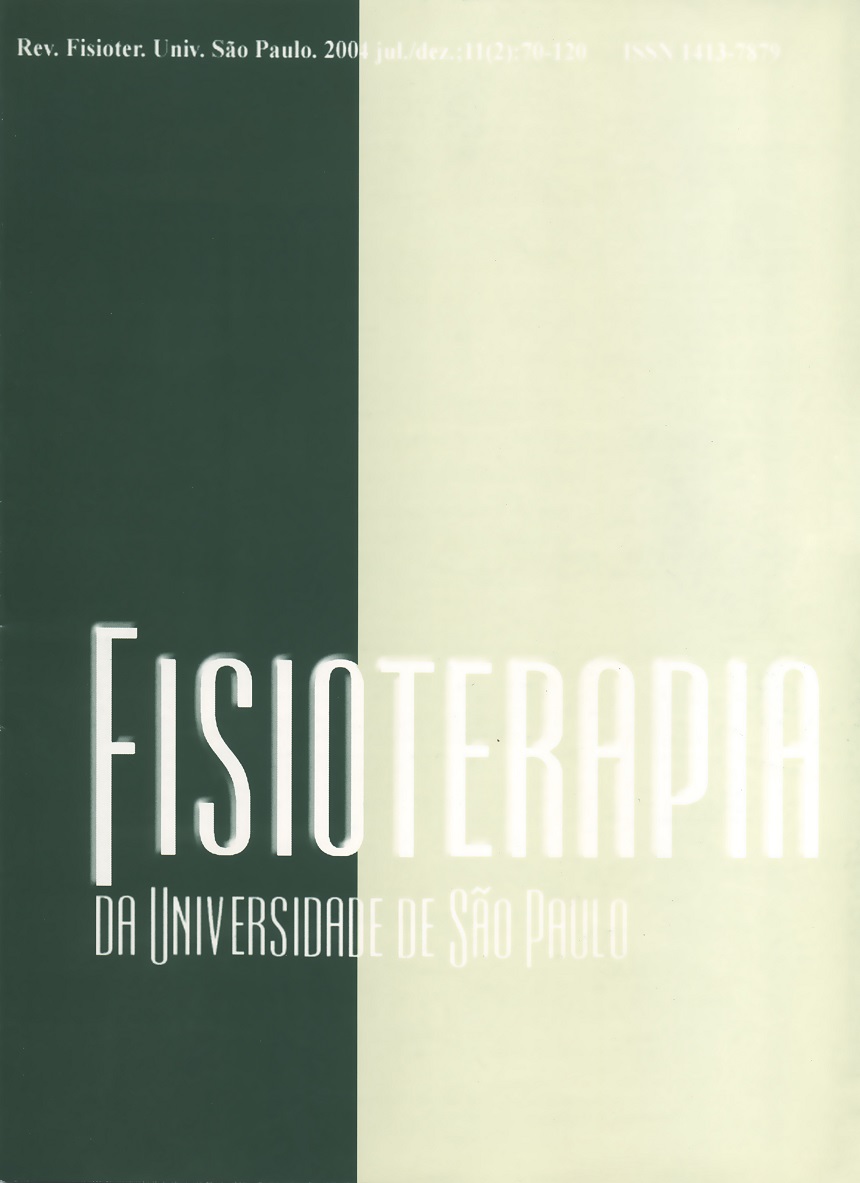As funções do controle postural durante a postura ereta
DOI:
https://doi.org/10.1590/fpusp.v10i1.77416Palavras-chave:
postura, manipulação da coluna, literatura de revisão, equilíbrio/fisiologia, sistema sensorial, atividade motora/fisiologia.Resumo
O controle postural é o controle do arranjo dos segmentos corporais baseado em informações dos sistemas visual, vestibular e somatossensorial. Acredita-se que o nível de importância das informações sensoriais seja modulável e redundante. O conjunto de informações sensoriais cria um quadro de referências. O quadro de referências controla os parâmetros do controle postural, como o equilíbrio, em relação à atração gravitacional. O controle da postural se baseia no monitoramento da representação interna da postura, o esquema corporal, que é uma representação geométrica do corpo humano, uma representação cinética do corpo, principalmente das forças aplicadas no apoio e uma representação da orientação do corpo em relação à gravidade. As funções do controle postural são suporte, estabilidade e equilíbrio. O objetivo desta revisão de literatura foi discutir os principais aspectos biomecânicos e de controle motor que estão associados aos sistemas sensoriais no controle da postura ereta. A separação anatômica dos sistemas sensoriais envolvidos com o controle postural e a degradação significativa das informações sensoriais, quando fechamos os olhos ou permanecemos em superfícies móveis ou macias sugerem que o sistema nervoso tem a habilidade de mudar discretamente a fonte principal de informação sensorial.Downloads
Os dados de download ainda não estão disponíveis.
Downloads
Publicado
2003-06-30
Edição
Seção
Artigos
Como Citar
As funções do controle postural durante a postura ereta. (2003). Fisioterapia E Pesquisa, 10(1), 7-15. https://doi.org/10.1590/fpusp.v10i1.77416



